JAMES DEMPSEY, 94: RADIO OPERATOR
Newfoundlander who guided early flights across the Atlantic.
He
gave bearings to the Hindenburg and to flying boats, and played a key role in
sinking the Bismarck
Special to The Globe and Mail
February 18, 2009
by
J.M. SULLIVAN
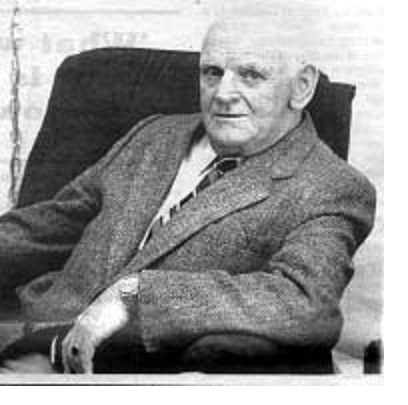 ST.
JOHN'S -- In an era when Newfoundland was on the world's military strategic cusp
and a global commercial crossroads, James Dempsey was a wireless operator and
radio technician whose telegraphing skills allowed him to play vital roles in
many of the triumphs and the tragedies of pioneering transatlantic commercial
and wartime flight. He helped to guide the first commercial flying boats from
Ireland to Newfoundland, and once even gave bearings to the famed, doomed
Hindenburg.
ST.
JOHN'S -- In an era when Newfoundland was on the world's military strategic cusp
and a global commercial crossroads, James Dempsey was a wireless operator and
radio technician whose telegraphing skills allowed him to play vital roles in
many of the triumphs and the tragedies of pioneering transatlantic commercial
and wartime flight. He helped to guide the first commercial flying boats from
Ireland to Newfoundland, and once even gave bearings to the famed, doomed
Hindenburg.
As
the Second World War loomed, he was one of the first radio staff on site of both
the new Botwood seaplane terminal and the fledgling airfield at Gander, where he
became involved in the surveillance of German U-boats lurking in the North
Atlantic. Gander was also the vital liftoff point for the Royal Air Force's
Ferry Command, which, beginning in 1940, organized the transit of more than
20,000 North American- built fighters and bombers to fighting destinations in
Europe.
"The radio operators were pretty amazing," said Lisa Porter, a screenwriter who
interviewed Mr. Dempsey as part of the research for the award-winning TV series
Above and Beyond, which chronicled wartime Gander. "They were the first ones
there. The precursors to air traffic controllers. They were wireless operator
with Canadian Marconi on Signal Hill; these studies lasted six months and were
capped with a written exam at the Post Office. He passed in 1935.
His
first position was with Crosbie and Co. on the Imperialist, a deep-sea trawler
with a cargo of salt bulk fish and a crew of 60. He was also posted to the SS
Dasey, which was chartered to sail Newfoundland's Anglican bishop, William
Charles White, along the coast to conduct his annual summer confirmation tour.
Stints on various other boats followed until 1937, when was hired to work in
Botwood.
In
1935, the British, Irish and Newfoundland governments had met in Ottawa and
agreed to develop regular transatlantic mail and passenger services on "flying
boats," and Botwood, population 1,000, was selected as the location for a
seaplane terminal. Botwood had been earmarked as a potential aviation hub by
Charles and Anne Lindbergh in 1933, when they visited the town during an
extensive survey for the U.S. government. The town is located near the end of a
long, narrow harbour in Notre Dame Bay, along the great circle route between
London and New York, and already had an aviation history: In the early 1920s, an
Australian First World War veteran named Major Sidney Cotton kept three planes
there that he used to deliver mail and for reconnaissance in spotting seal
herds.
In
1933, British Imperial Airways won exclusive rights for transatlantic flights
and formed an agreement to share this prospect with Pan American Airways. In
1937, the "clippers of the skies" of Pan Am and Imperial began experimenting
with passenger and mail travel. Dempsey was in the second set, with William
Heath. Mr. Dempsey worked as a ground-to-air radio officer, as well as flying
with pilots who were calibrating radio direction finders for landing on nearby
Gander Lake.
As
a ground-to-air radio officer, Mr. Dempsey was on hand for the birth of
commercial flights across the North Atlantic. On July 6, 1937, the Pan American
Clipper III, then the largest airplane in the world, left Botwood for Foynes,
Ireland, just as the Imperial's Caledonia left Foynes for Botwood. Mr. Dempsey
was in contact with the Caledonia within 15 minutes of liftoff and maintained
contact throughout the flight. It was flying at 2,000 feet, with headwinds
sometimes reducing its speed to as slow as 90 knots. "I directed it into
Botwood," Mr. Dempsey later told the Gander Beacon. "There were four bearings a
minute on the final approach to Botwood. There was no instrument landing system
or radar in use in those days." He also directed the Clipper III on its 16-hour
journey in the opposite direction.
More than two years of test flights followed. Then, on Nov. 30, 1938, Botwood's
weather-forecasting office was relocated to Gander. As the radio operation was
so closely connected, it moved too.
Gander became an operational airport with four runways that year, the only such
facility is what is now Atlantic Canada. Gander International Airport was a
modernist gem of architecture and design, a showpiece with a special VIP lounge
for the more glamorous of the travellers - Marlene Dietrich, Bob Hope, Ingrid
Bergman, Marilyn Monroe - on the Christoph V. Doornum was docked in Botwood's
harbour, loading ore concentrate from the Buchans mine. Locals joined
the
Newfoundland Constabulary to seize the ship and imprison the crew.
Meanwhile, with the only functioning airport in the North Atlantic region,
Gander became an important strategic point for military manoeuvres and Ferry
Command. Europe needed planes, but they could not be shipped, considering the
dangers of U-boats. The planes were too valuable pieces to expose to torpedoes -
they needed to fly, and Newfoundland was well positioned as a refuelling point.
At
the time, the RCAF controlled both Botwood and Gander, and Mr. Dempsey worked
for the British Air Ministry. The primary task was to keep bearings on German
submarines. Each shift brought lists of frequencies and schedules for listening,
but never the names of the targets. The radio operators just knew they were
taking bearings on German battleships, destroyers and U-boats. Sometimes,
however, they got an inkling of their targets. When the Bismarck was sunk on May
27, 1941, Mr. Dempsey reviewed the logbooks and suspected that he and a Bermuda
operator had helped to plot the feared German battleship's location. Mr. Dempsey
never tried to pursue any recognition for this, and the Royal Air Force later
destroyed all the logbooks.
In
any case, the radio operators knew their work was important. By 1942, German
submarines were actively prowling the Strait of Belle Isle and moving along the
Gaspé coast. Gander was the scene of many aviation calamities too. Among them
was the 1941 death of Major Frederick Banting, co-discovered of insulin, who was
on a Hudson Bomber that had taken off for Scotland before crashing near Musgrave
Harbour.
Such were the perils of war, but there were benefits too. "We were a colony and
there is no question that World War II brought us into the aviation realm," said
Nelson Sherren, a former pilot and aviation historian. "World War II really
started industrialization in Newfoundland, excepting a couple of pulp and paper
mills, but this began our training of tradespeople and engineers. And Botwood
and Gander were part of the war effort that was very important to the Allies."
The
end of war didn't mean the end of drama for Gander or Mr. Dempsey. For example,
on Sept. 18, 1946, Sabena Airline DC4 flight 00CBG from Brussels to New York
with 44 on board crashed at Dead Wolf Brook. With 18 survivors and 26 dead, it
was the world's worst air crash to date, and he was part of the team that helped
to locate the crash site and co- ordinate the complex rescue.
With Confederation in 1949, the Canadian government took control of the airport,
and Mr. Dempsey found himself working for Transport Canada. With the jet age,
transatlantic flights no longer needed to stop in Newfoundland for refuelling,
but Gander remained a viable airport. Mr. Dempsey was radio supervisor from 1948
to 1953 and then worked as a radio technician until retiring in 1973.
After retiring from Transport Canada, he worked in documenting the unique
chapter of Newfoundland's wartime history.

Jim Dempsey and his world of
radio communications
Reproduced with
permission from The Beacon Supplement July, 1987
Contributed by
Carol (Mercer) Walsh - Class 1954
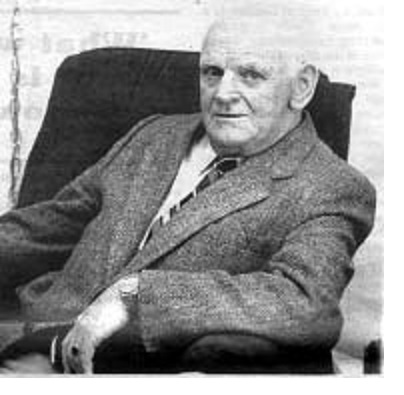 Still
vigorous, chatty and intensely alert for his 72 years, retired Transport Canada
radio operation and Brochen Street resident James Dempsey is a familiar figure
as he strolls around town with his half-century of memories. And, to know his
background is to know how Gander emerged, for he was one of a small contingent
of communications pioneers who were there from the very beginning.
Still
vigorous, chatty and intensely alert for his 72 years, retired Transport Canada
radio operation and Brochen Street resident James Dempsey is a familiar figure
as he strolls around town with his half-century of memories. And, to know his
background is to know how Gander emerged, for he was one of a small contingent
of communications pioneers who were there from the very beginning.
Particularly, he has fond memories of the old townsite which,
despite modern day Gander, he has missed greatly. “It was much smaller and
closer,” he recalled of this airport fringe community that was a forerunner to
the Gander that is seen today.
His roots, naturally, are with the past and besides his
lifelong dedication to aviation and marine communications, he also cut out a
niche in history as an early community liquor-licenced club associate, as well
as in sports. For these outstanding endeavors he has been officially
recognized.
A native of St. John’s, his mere surname suggests his Irish
extraction, but his lively and witty personality confirms it the more. “It was
the smartest move I ever made to get out of there,” he smiles, in relation to
St. John’s but his remark, of course, is in retrospect and more than a
criticism, it speaks for the satisfaction he has gotten out of his life at
Gander.
His initial interest in communications came when he
apprenticed, free of pay, as a radio wireless operator with Canadian Marconi at
Signal Hill, under Superintendent Jim Collins, father of the present Minister of
Finance. It took six months following which he wrote exams at the post office
and passed under examining Officer Jack Crocker.
This was 1935 and his first job was with Crosbie and Co. on a
deep sea trawler named Imperialist, which handled salt bulk fish only since
refrigeration had not then come into its own. The 60 man crew was half
Newfoundlanders and half French.
Later, he would take other jobs to carry him through the
year. One was on the S.S. Dasey, a vessel chartered to take the Anglican Bishop
around the coasts of Newfoundland on his annual summer confirmation tour.
Following this he joined the Marie Yvonne under Capt. Jim Bragg, which was
engaged to search for the John Henry Madill, a newsprint carrier owned by a
publishing company in Chicago. Enroute from England, the all welded ship was
never located.
This took him into 1936 and over that year he would be radio
operator on the seal S.S. Thetis and after that be involved in copying wireless
press for the Daily News and St. John’s Evening Telegram under contract C.B.
Scott.
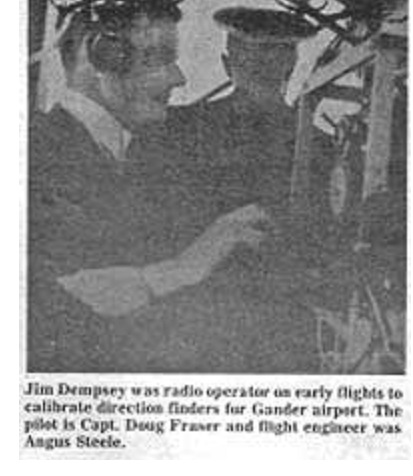 In
1937, too, he turned to the sealfishery for work, this time on the S.S. Neptune,
a well known vessel.
In
1937, too, he turned to the sealfishery for work, this time on the S.S. Neptune,
a well known vessel.
It was his association with Mr. Collins of Marconi that would
eventually bring him in contact with Gander but, first, he was hired for
operations at Botwood, which precluded construction of an airport in an area
that was becoming known as the Newfoundland Airport, then Gander.
Being in the field of communications, Squadron Leader H.A.L.
Pattison, who headed up operations at Botwood, knew Mr. Collins and inquired of
the later whether there were wireless operators available, for there was
employment for them at Botwood, where the first flying boats across the North
Atlantic were to make their debut.
One such position was offered to Mr. Dempsey, which he gladly
accepted but not until he had visited Signal Hill to say goodbye. It just
happened that a service was needed so he chipped in, again free of charge, and
gave a bearing to a German ship - The Hindenburg.
“That’s the last thing I ever done free gratis,” he recalled
lightly of his work on Signal Hill.
He arrived at Botwood May 6, 1937 to find five English radio
operators putting a station together. Newfoundlanders were being taken on in
pairs and the first two to be hired were Vincent Myrick and Art Pittman,
following which Mr. Dempsey and William Heath, an Englishman already established
in Newfoundland, were hired. Then, there were Fred Lewis and Bill Lahey; Jim
Strong and Charlie Blackie, in that order. Once the core was in place, men were
hired in singles.
Among Mr. Dempsey’s first assignments was flying as a radio
operator with Capt. Doug Fraser who would become, in time, the first pilot to
land at Gander airport. They were calibrating radio direction finders for
landing on Gander Lake.
Among his first duties as a ground-to-air radio officer at
Botwood was to direct the first commercial flights across the North Atlantic on
July 6, 1937.
There were two flights, one a short Sunderland flying boat of
the Imperial Airways, which left Foynes, Ireland for Botwood at 5 p.m. The
first contact was made 15 minutes after being airborne and it was maintained
right through to Botwood. It was flying at a height of 2000 feet and speed was
reduced to 90knots at times because of headwinds.
“I directed it into Botwood,” he said, “there were four
bearings a minute on the final approach to Botwood. There was no instrument
landing system or radar in use in those days.”
On the same day he directed a Pan American Clipper which left
Botwood enroute to Foynes, the opposite flight, taking 16 to 17 hours. Mr.
Myrick did Botwood, Ireland and New York, with point to point conversation
The second Atlantic commercial flight landed at Gander Lake.
For this, Mr. Dempsey was posted to Glen Eagles, a position at the lake. He was
located in a camp with a radio transmitter and receiver. He remembered that
Hugh Lacey was the weather observer. Mr. Dempsey didn’t think there were any
flights in 1938 but flights did resume in 1939.
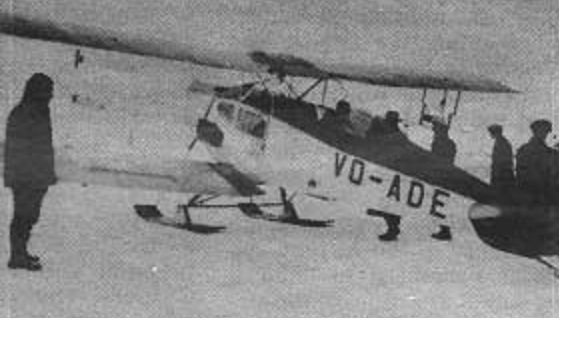 On
November 30, 1938, the weather forecasting office at Botwood ceased to be, for
Gander by now, was showing its potential as an airport so the weather operation
was moved to Gander. That meant that radio operations, being closely related,
moved as well. In all, there were about 40 people working in operations at
Botwood.
On
November 30, 1938, the weather forecasting office at Botwood ceased to be, for
Gander by now, was showing its potential as an airport so the weather operation
was moved to Gander. That meant that radio operations, being closely related,
moved as well. In all, there were about 40 people working in operations at
Botwood.
The day on which was transferred to Gander there was a foot
and a half of snow. His wife, Vera, the former Vera Greene of Bishop’s Falls,
arrived at Gander in February of 1940. (They have three children, Patricia,
Helen and Jane).
He was working for the British Air Ministry and the young
family (they had only Patricia at the time), obtained an apartment, as part of
the location of the radio receiving station. The area is now referred to as the
Old Navy Site. For transportation, operators used an enclosed shed, eight feet
by six and six high, which contained a stove and a lantern and was drawn by a
tractor.
His work, needless to add, was war-oriented and mainly, the
task was to keep bearings on any German submarine and report bearings to the
Canadian Navy. Mr. Dempsey kept a diary, a notebook of daily details of his
work, but destroyed the information because it was privileged.
He remembers 1942 quite well. He would keep bearings on
German submarines, which had entered the Strait of Belle Island were operating
between there and the Gaspe coast, then report the information to the Canadian
Navy which, at first, did not believe such activity existed.
The sinking of Allied ships, however, soon confirmed as much,
there was a period between September and October that year, when war was very
threatening in the Newfoundland and Canadian waters and it was impossible to
know what would happen next. It was the time when three ore carriers were sunk
at the pier at Bell Island.
There was considerable German submarine activity in the area
of Anticosti Island. This was no sooner passed on the Canadian Navy when, two
nights later, the Caribou, a Newfoundland passenger boat, was sunk in the Gulf
with a big loss of life. “I certainly felt awfully bad when I heard the Caribou
was gone,” he said.
Saying how important the war effort at Gander must have been,
he recalled that radio operators also monitored activities of the famous German
battleship Bismarck, which was eventually sunk by the British.
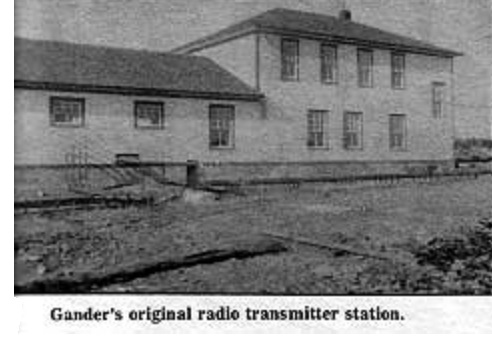 During
the last year of the war, Mr. Dempsey and his family took up new residence.
They moved to an apartment in a building known as the Mars Building. It was
close to where the vacated EPA premises are now.
During
the last year of the war, Mr. Dempsey and his family took up new residence.
They moved to an apartment in a building known as the Mars Building. It was
close to where the vacated EPA premises are now.
The advent of post-war meant winding down of wartime
activities and there were many changes in administration relative to this
change, with the ultimate change coming at confederation in 1949, when the
Canadian government took over the airport, but, in the interim, the more gradual
change meant the disappearance of the military, in favour of civilians taking
over. Former buildings for military use became available for civilian use, at
which time an establishment with a community look began spring up around the
airport.
There was already a popular night club, for its idea was
spawned at Botwood, although the club was never started there. Formation of
such a club came to mind as a means of socializing, so by the time, personnel
had moved to Gander from Botwood the idea was ready to take root. Known as the
Newfoundland Airport Club, it was officially opened November 30, 1938 and it was
the first liquor licenced bar ever in Newfoundland. There were pubs in St.
John’s, for instance, but these didn’t have bars.
Money was not used directly in purchases, however, at the
Airport Club. The practice was to buy books of stamps, at five dollars each and
these stamps were received in exchange for liquor or beer. Something else that
was peculiar. A customer could not patronize another by buying that customer a
drink. “He could only treat himself and that was the law,” was the way Mr.
Dempsey put it.
The Club had about 50 members and was located in rooms on the
first floor of the old administration building; the Club moved downstairs,
adding pool tables and a movie projector. A closed Club, members had to be
nominated, and then approved formally to be accepted.
In 1945 the Club took up new quarters at the lower end of
Chestnut Avenue down from Hangar 13 and in a building vacated by a construction
company. Later the Club relocated to a vacant Sergeants Mess near a bridge to
the army site. The final move for the Club in the old town was to the vacated
RCAF Officers Mess just west of Hangar 13.
The latest location of the time-honored Club is off the Trans
Canada Highway in the new town of Gander, where it was officially opened in
1960. One function of the Club was to hold a monthly dance with an orchestra
for teenagers.
Mr. Dempsey was vice-president of the Airport Club from
1951-1954 and president from 1954-1962. He selected the land where the Club is
now located and is honored as a life member of the Club.
In 1957 Mr. Dempsey introduced curling to Gander using the
old hockey rink, and then in 1952 two sheets were provided for curling at the
Airport Club. For his contribution to curling he has been honored by the
province, being elected to the Newfoundland Curling Hall of Fame, Builders’
category.
He also help organize broomball, playing it first on natural
ice in the old hockey rink, where the stadium is at present. At times, the game
was played with water on the ice, he recalled lightly, which hardly made it a
non-splash exercise.
Mr. Dempsey, who had been a radio supervisor from 1948 to
1953, retired in 1973, after spending the final 20 years as a radio technician.
When construction of the new town commenced he moved to a
home on Brochen St. where has resided ever since.
Compared with the closeness of community at the old town, he
finds the new and much larger Gander somewhat lonely. Reflecting on 50 years of
his life at Gander, he said about 75 percent of the people he had known have
passed away.
Not only that but old-time Gander, being closely knit, “was
better, was more social, not the same now as it was then.

